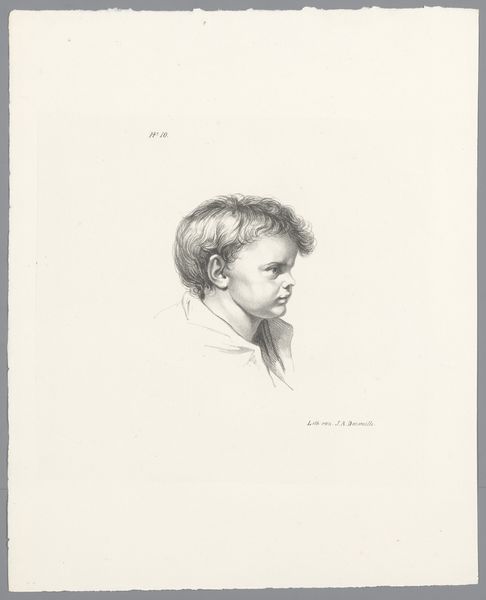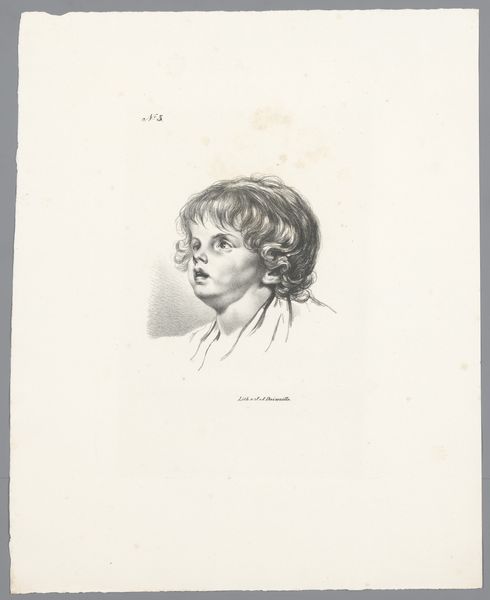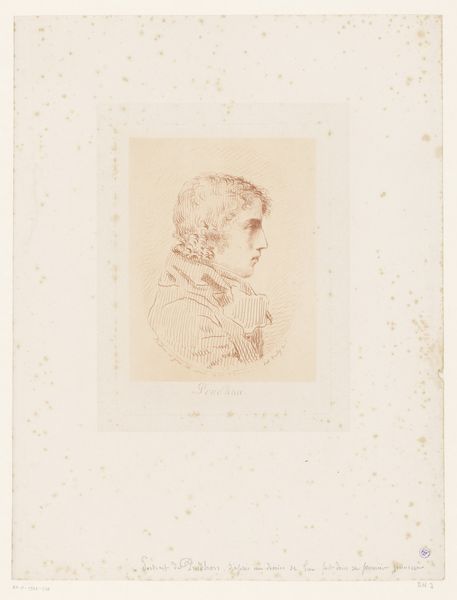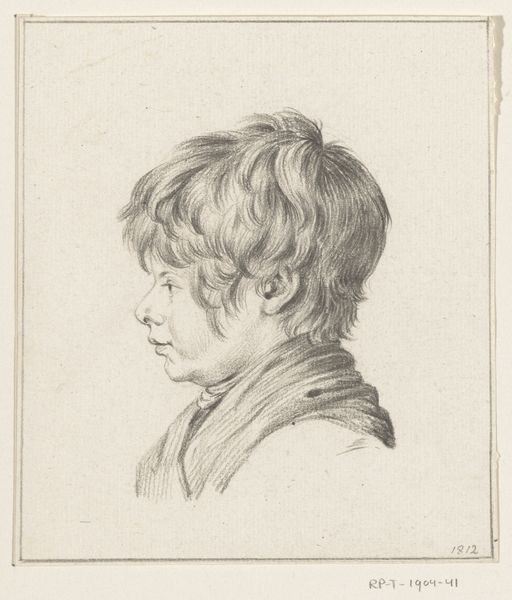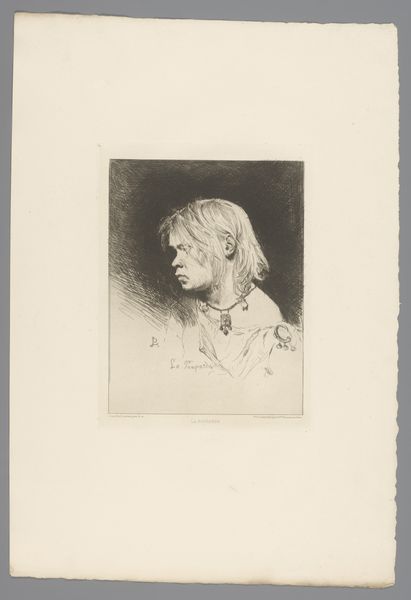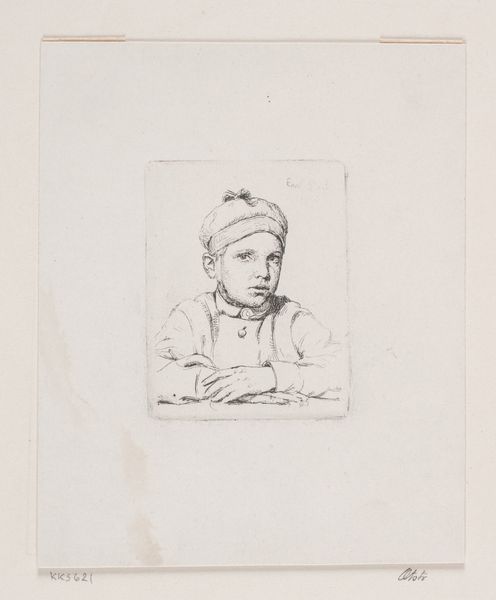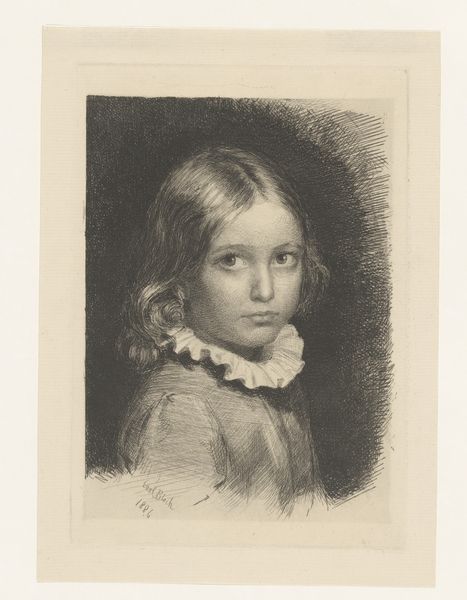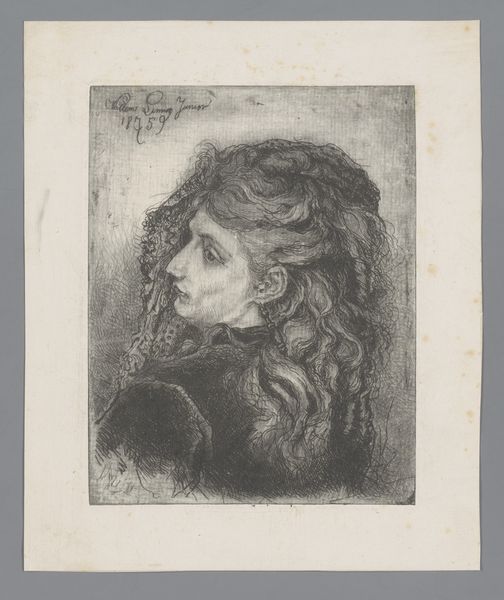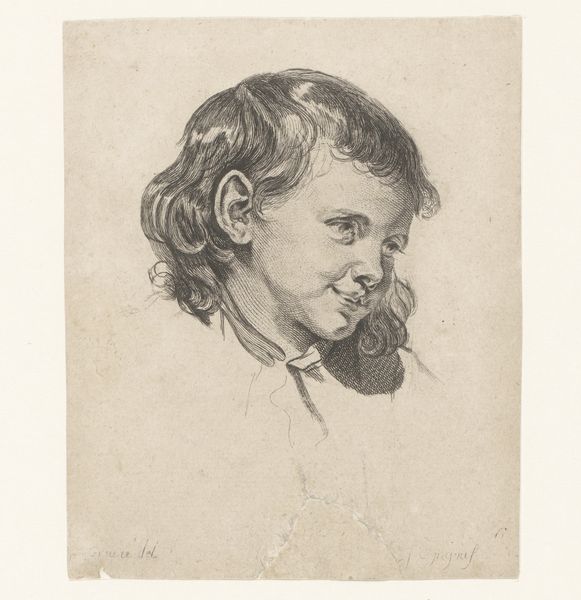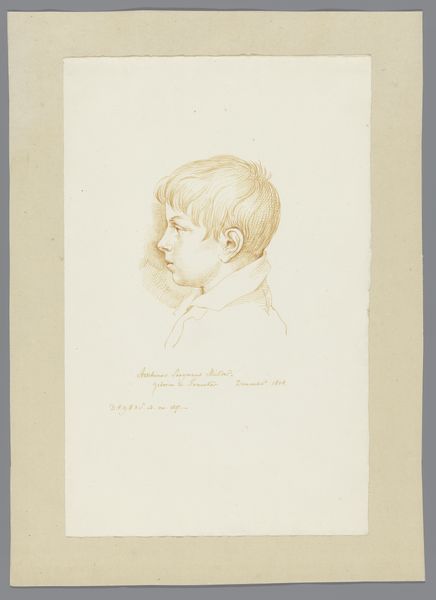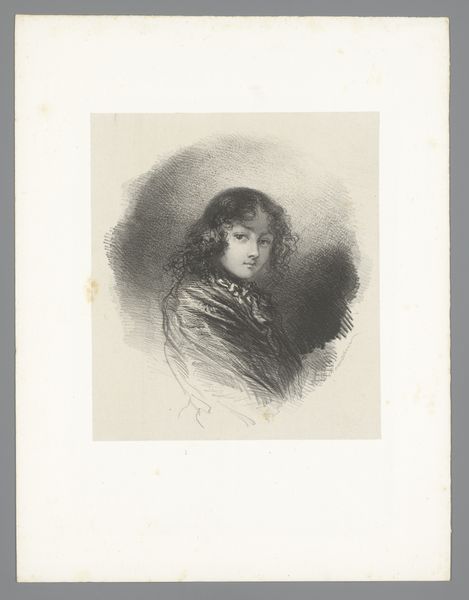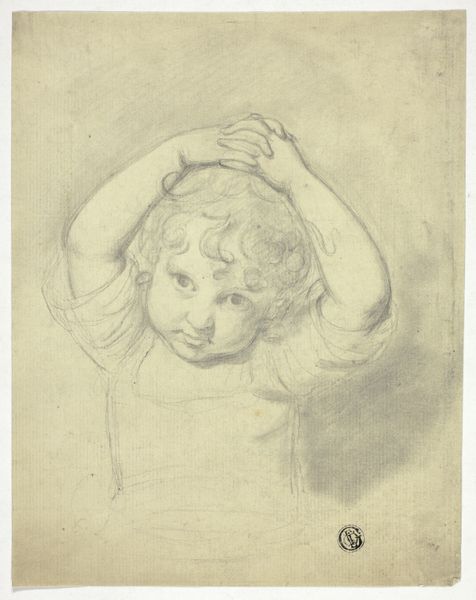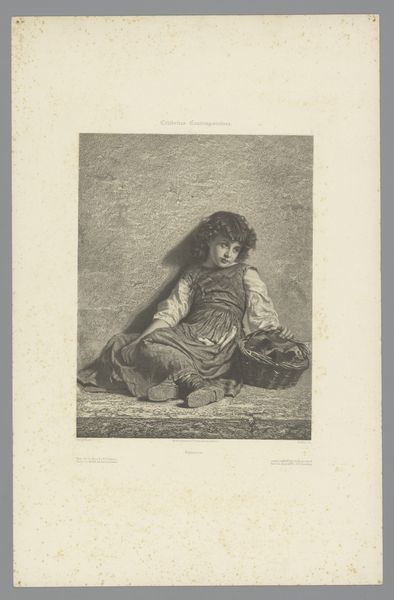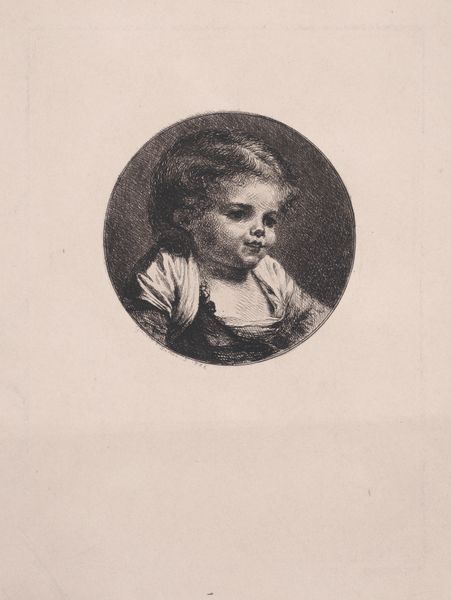
drawing, paper, pencil
#
portrait
#
drawing
#
neoclacissism
#
aged paper
#
homemade paper
#
paper non-digital material
#
pale palette
#
reduced colour palette
#
light coloured
#
classical-realism
#
personal journal design
#
figuration
#
paper
#
personal sketchbook
#
pencil
#
line
#
sketchbook drawing
#
storyboard and sketchbook work
#
academic-art
Dimensions: height 130 mm, width 91 mm
Copyright: Rijks Museum: Open Domain
Curator: Here we have "Jongenskopje," or "Head of a Boy," a drawing created sometime between 1780 and 1849 by David-Pierre Giottino Humbert de Superville, housed right here at the Rijksmuseum. It’s executed in pencil on paper. Editor: Immediately, I’m struck by the simplicity. There's an innocence about it. It feels like a glimpse into a private moment, perhaps a father sketching his son. What’s grabbing you, from a formal point of view? Curator: The work exemplifies neoclassical ideals. Observe the linearity, the focus on form and the minimization of color, adhering to academic principles. The light palette enhances the sketch's ethereality and emphasizes pure form. Editor: There's a delicacy that transcends mere technical skill. See the wisps of hair, the curve of the neck... He's captured a fleeting sense of childhood, that sort of dreamy distraction that overtakes them. Almost makes you wonder what the boy is thinking about. Curator: The classical-realist approach allows a degree of representational accuracy, even though its subtle style leans heavily into idealism, reflecting a deep engagement with form and essence, more so than realistic detail. Editor: Maybe that's what creates that timeless feeling. It's like the artist pulled back, letting the essence of childhood shine through, untouched by the specific trends of the day. The aged paper just amplifies that sense of peering into the past. It feels both distant and utterly relatable, that's a real talent to get something across. Curator: Certainly. The sketch exemplifies this commitment to neoclassical ideals through its carefully considered construction and subtle emotional restraint. Each element serves to distill the figure into its most essential components, highlighting both the universality and the individuality inherent within the human form. Editor: So, what at first seemed simple reveals itself to be quite nuanced upon closer inspection, which often turns out to be true, don't you think? Curator: Indubitably.
Comments
No comments
Be the first to comment and join the conversation on the ultimate creative platform.
